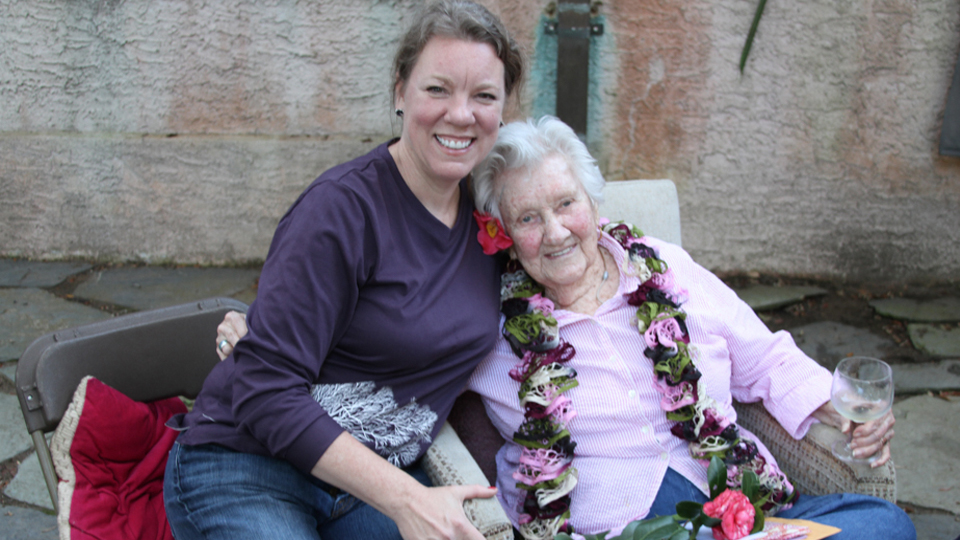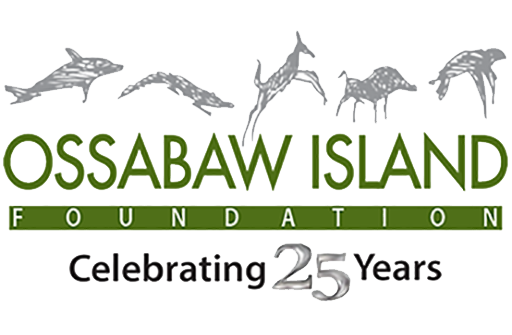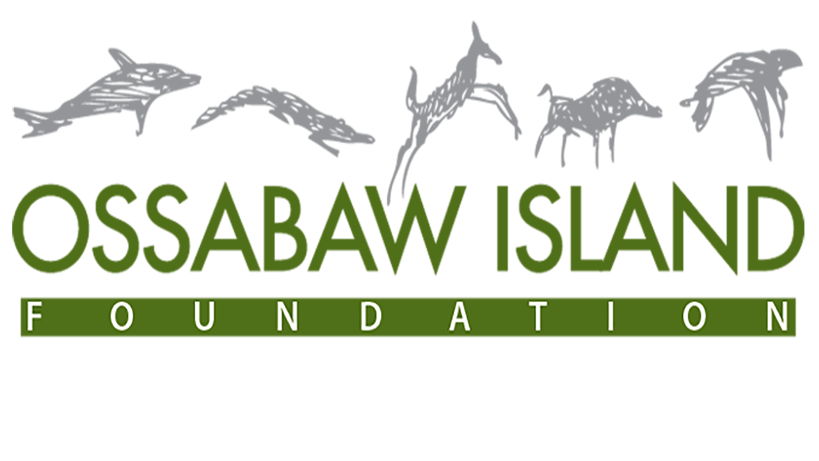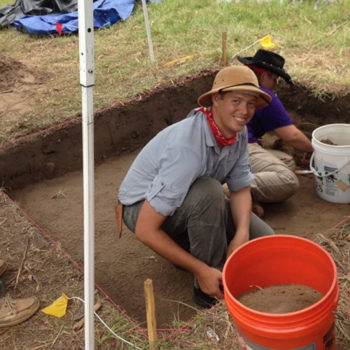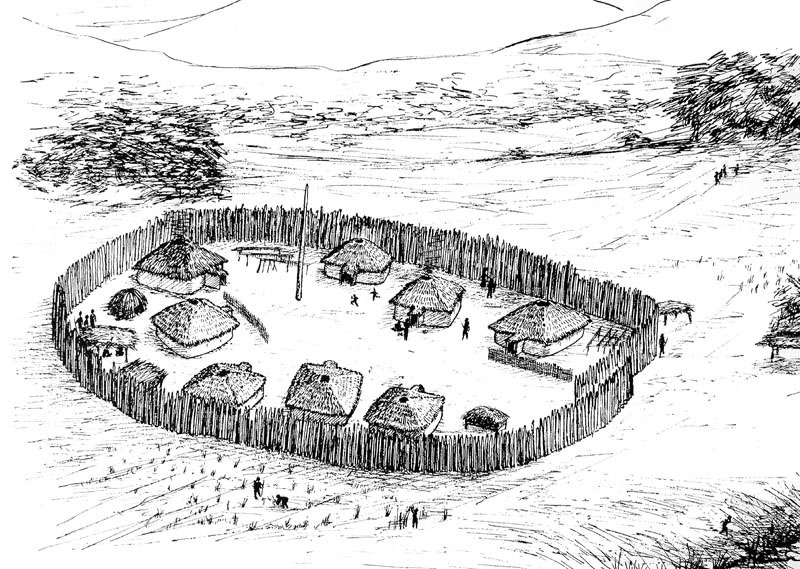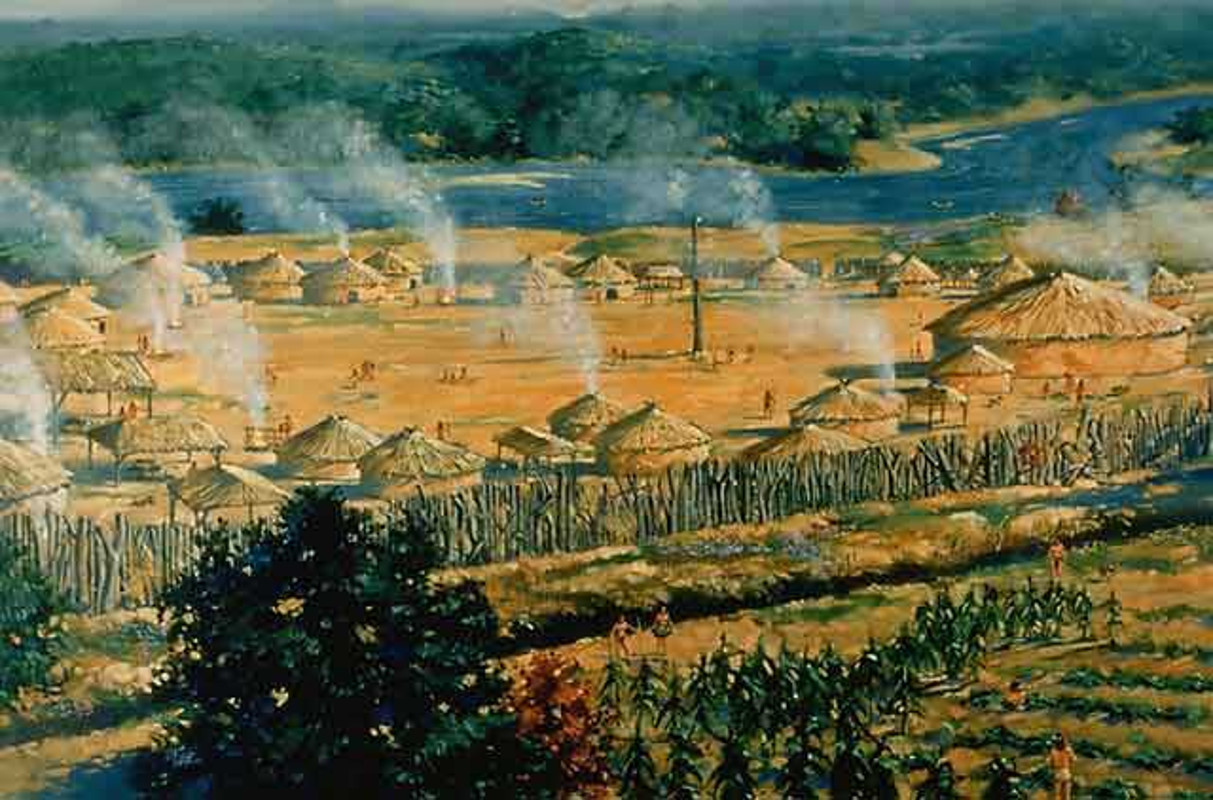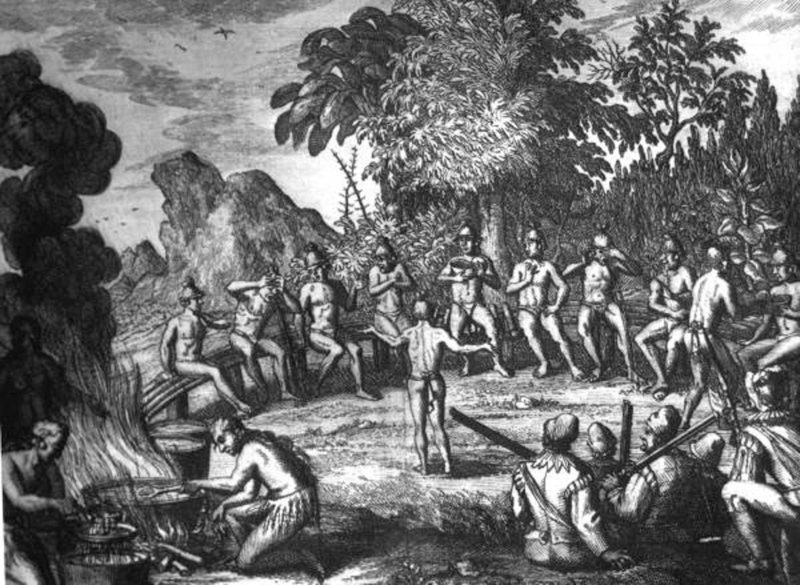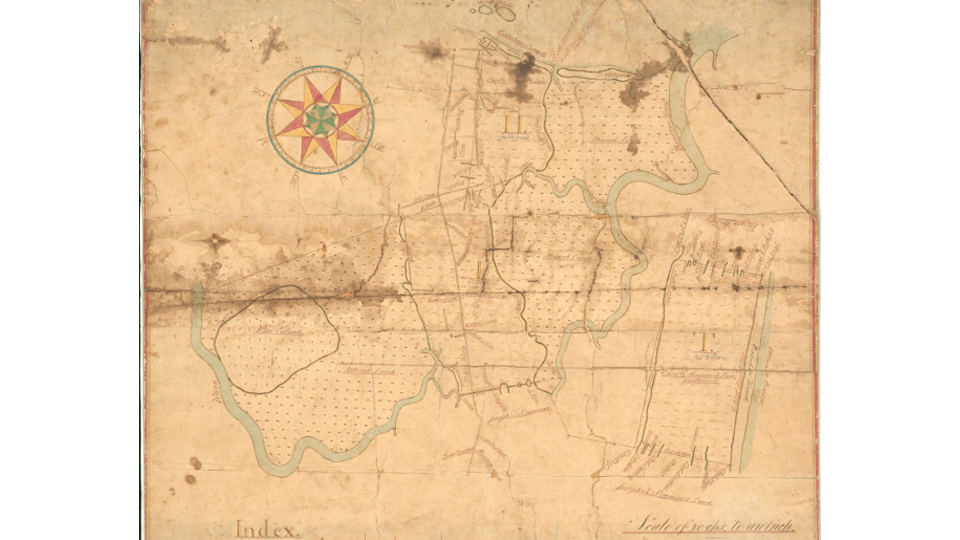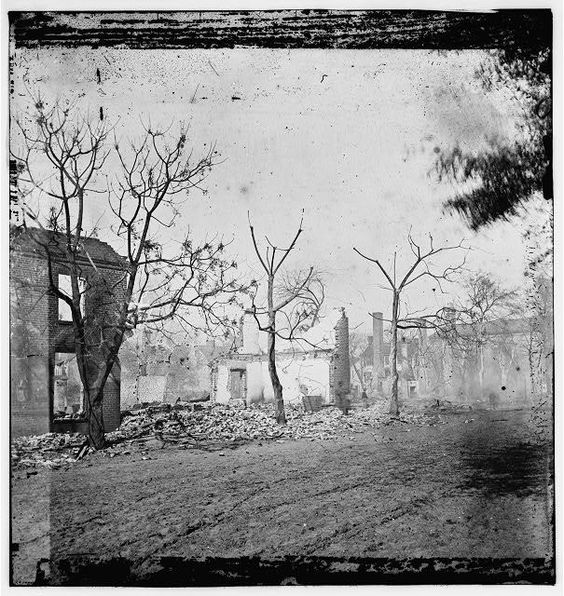
50 Centuries of Human History
Ossabaw Island has a 5,000-year history of human residents and visitors, and the island’s cultural heritage is rich in ethnic and racial diversity and in the ways these many cultures made Ossabaw Island their home.
So, what’s in a name? The island’s name is widely held to be a corruption of a Creek Indian word that loosely translates to “land of holly” or “holly bush growing place”. This refers to the Yaupon Holly that grows abundantly across the island. Why was the Yaupon Holly special to the native people? They made a Black Drink, a strong caffeine tea-like drink. Yaupon is the only holly in North America that contains caffeine in its leaves.
Click the link to learn more about Yaupon Ossabaw – Land of Holly
For thousands of years, the early indigenous people of North America spoke a variety of different languages based on a handful of different “linguistic stocks”. Of these “stocks”, Muskegon was the basis for some of the languages spoken in what is now the southeastern United States, including the language of the historic Creek Indians of coastal Georgia.
For over 200 years, beginning in the early 1500’s, Spain, France and ultimately England explored the region and interacted with the locals. The translating of local dialects by this variety of early explorers led to many different spellings of local place names. Ossabaw has historically been recorded as “Osbo”, “Hoospa” and “Osspo”.
Discover Ossabaw’s journey through human history, beginning with hunter-gatherers and larger, permanent farming villages of indigenous people. Spanish missionaries, English landowners and enslaved Africans and their freedmen descendants also left their mark on the island. In the late 19th and 20th centuries the island hosted white industrialists for sport hunting and family recreation, environmental preservationists, writers, artists, scientists, and musicians.
Today, The Ossabaw Island Foundation, in partnership with the Georgia Department of Natural Resources, work to fulfill the island’s Heritage Preserve mandate. Their charge is to maintain Ossabaw island’s unique, undeveloped and unspoiled condition so that the island remains accessible to current and future generations for scientific, cultural and educational study and research.
Late Archaic Period – St. Simons Phase
5000 Years Before Present
Ossabaw Island was occupied by migratory North American tribes, living seasonally on the island, in small villages. Cane Patch Island was once a large prehistoric shell midden. Shell mining for tabby construction in the 19th century and road maintenance in the 20th century has destroyed the vast majority of the midden. More than 250 native archaeological sites are on Ossabaw Island. Artifacts found on Ossabaw date to 5,000 years ago.
Late Archaic Period – St. Simons Phase
4400 Years Before Present
Ossabaw Island was occupied by migratory North American tribes, living seasonally on the island, in small villages. Cane Patch Island was once a large prehistoric shell midden. Shell mining for tabby construction in the 20th century and road maintenance has destroyed the vast majority of the midden. More than 200 native archaeological sites are on Ossabaw Island. Artifacts found on Ossabaw date to 4,000 years ago.
Mississippian Period
1500 Years Before Present
Ossabaw was occupied by large permanent settlements of Native Americans who relied heavily on agricultural production.
Proto-Historic Altamaha Phase – 1550’s to 1700’s
460 Years Before Present
1568
Spaniards establish missions in Coastal Georgia and rely for food on Guale Native Americans living on the coast (including on Ossabaw Island). No archaeological evidence of permanent missions has been found on Ossabaw, but three archaelogical sites on the island contain Spanish pottery fragments dating from this period, indicating some Spanish presence on the island.
This is the last period of known indian inhabitants along the Georgia coast.
1579
Spaniards burn the Guale village of Azapo presumed to be located on Ossabaw Island’s South End along with other coastal Guale villages.
1600
Guale tribes hunt and fish the islands and mainland.
1500-1700s
Guale depopulation of the coast due to slave raids by the Spanish, old world diseases, and forced relocation to St. Augustine.
1680
The Spanish withdraw from the Georgia coast.
Mid-1700s – Creeks and English Settlers
(swipe left or right to discover more)
Mid-1700s – Creeks and English Settlers
(click dates and arrows on timeline to discover more)
-
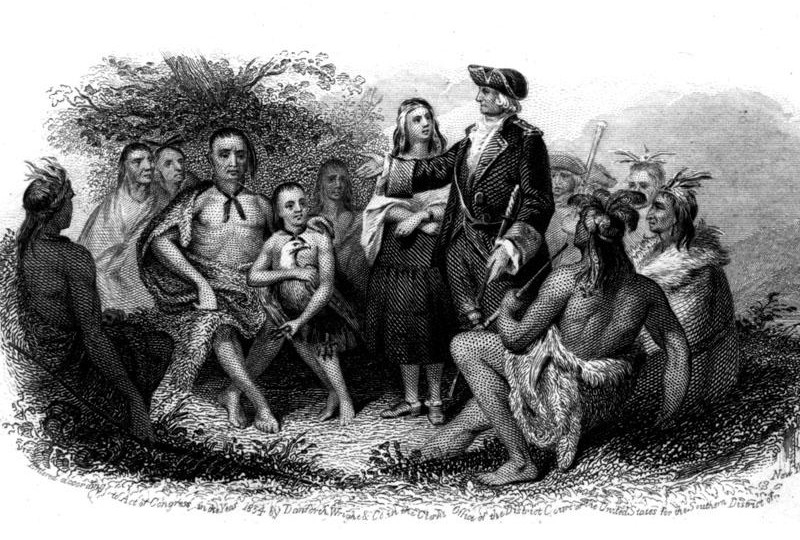
1733
English settlers and governing bodies in Georgia set aside Ossabaw Island and neighboring barrier islands for a hunting and fishing reserve for the Creek Indian Tribe.
-image courtesy of Hargrett Rare Book and Manuscript Library, University of Georgia Libraries; found at http://www.georgiaencyclopedia.org/articles/history-archaeology/creek-indians
-
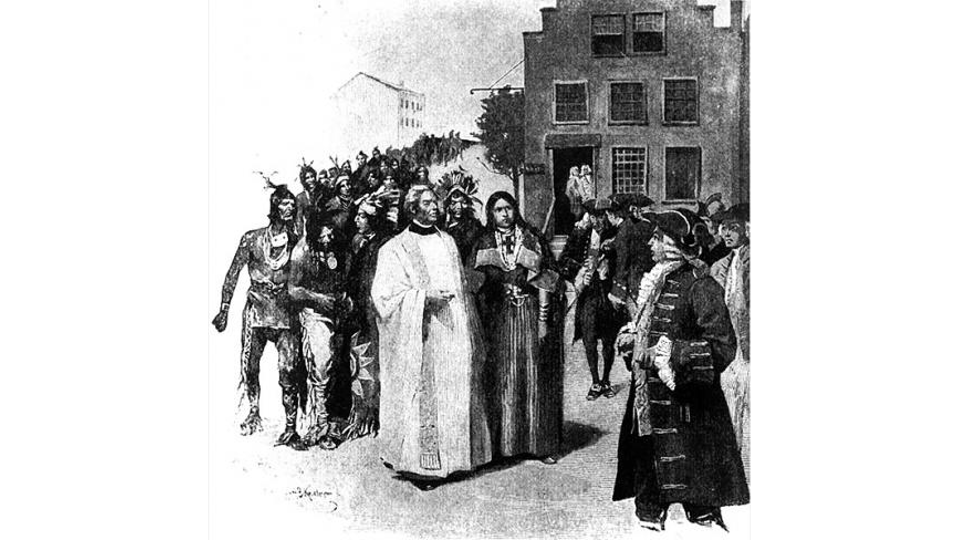
1747
Ownership of Ossabaw, St. Catherines, and Sapelo Island was transferred to Mary Musgrove and her husband, the Reverend Thomas Bosomworth. Musgrove is the mixed-race translator between General Oglethorpe and the Yamacraw and Creek Indians, and Bosomworth is an English clergyman.
Mary Musgrove, the Early Owner of Ossabaw Island
-image courtesy of Hargrett Rare Book and Manuscript Library, University of Georgia Libraries; http://www.georgiaencyclopedia.org/articles/history-archaeology/mary-musgrove-ca-1700-ca-1763
-
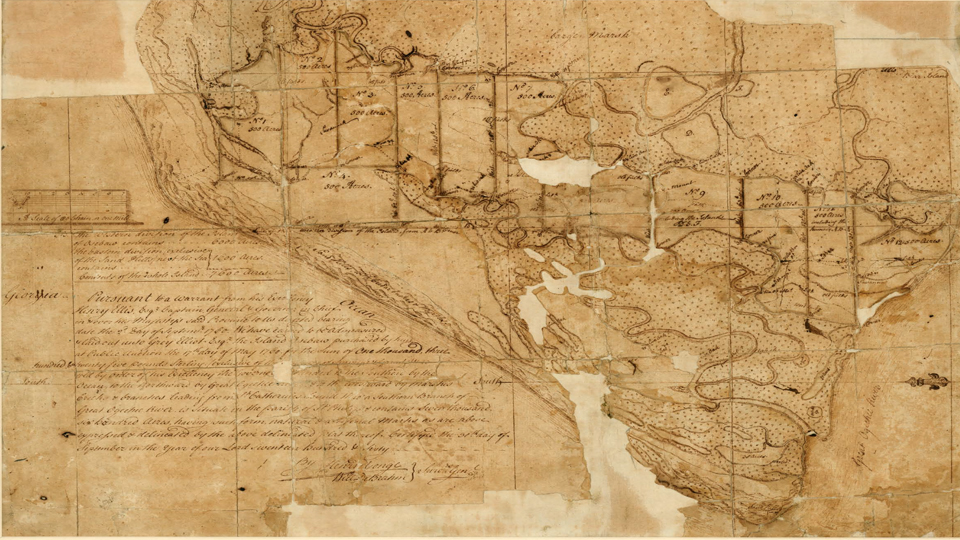
1760
Mary Musgrove and her husband, Bosomworth, claim to Ossabaw was disputed in 1758. A different group of Creek leaders conveyed the three islands Ossabaw, Sapelo and St. Catherine’s to King George II of England. Ultimately the English Government directed Henry Ellis the royal governor of Georgia to sell Ossabaw and Sapelo Islands at public auction and use the proceeds to settle the Bosomworth’s claim. Ossabaw is then purchased by Grey Elliott, at an auction. Elliott sells to Henri Bourquin.
Late 1700s – Ossabaw’s First Plantation and Ship Building
1763
Henri Bourquin sells Ossabaw Island to his son-in-law John Morel, Sr. Morel purchases thirty enslaved people including women and children from an Augusta, GA estate. The island was farmed and timbered beginning in 1763 using slave labor. Cattle, pigs and poultry were managed by the enslaved. Morel offered timber, beef, pork and poultry for sale. This is the earliest indication of African enslaved people living and working on Ossabaw Island.
1767 – 1797
Dr. Paul Pressly’s forthcoming University of Georgia Press book entitled A Southern Underground Railroad: Black Georgia and the Promise of Spanish Florida and Indian Country.
“The Southeast provided a vital connecting link between the Black self-emancipation that occurred during the American Revolution and the growth of the Underground Railroad in the final years of the antebellum period. From the beginning of the revolutionary war to the eve of the First Seminole War in 1817, hundreds and eventually several thousand Africans and African Americans in Georgia crossed the borders and boundaries that separated the Lowcountry from the British and Spanish in coastal Florida and from the Seminole and Creek people in the vast interior of the Southeast.” University of GA Press
A Southern Underground Railroad 1767 – 1797
1776
John Morel, Sr. dies. His three sons, John, Jr., Peter, and Bryan, each inherit a portion of the island. Each establishes a plantation and continues to cultivate indigo.
1779
During the American Revolution, two American galleys were burned by their crew, probably on the South End of Ossabaw.
1781
Escape of two enslaved families from Ossabaw Island to British East Florida.
The Story of Betty & Hercules by Dr. Paul Pressly
1782
Ossabaw Island’s North End plantation was raided by Thomas Brown’s East Florida Rangers. Georgia’s Governor, John Martin, describes the raid in a letter,”…Information has also just come to hand that a Captain Scallion, in a galley from St. Augustine, did last evening secretly come into one of the inlets of Ossabaw in this state, & brunt a new vessel on the stocks, nearly finished, taken off thirty Negros and two thousand weight of indigo belonging to the estate of John Morel.
1787
Peter Henry Morel sells his third of Ossabaw Island (Middle Place Plantation) to David Johnston. Johnston sells it to Patrick Houston in the same year.
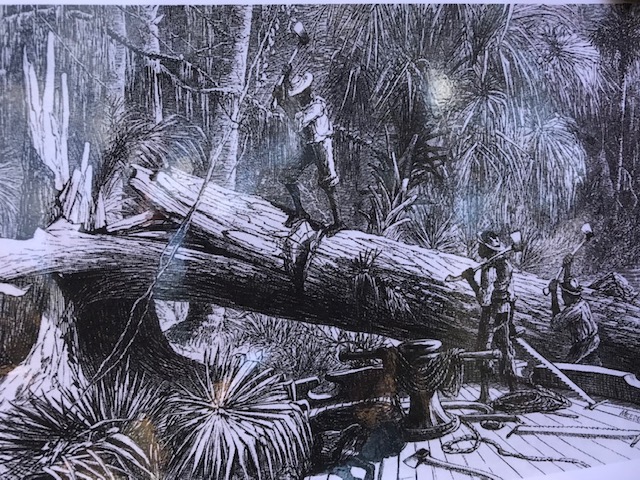
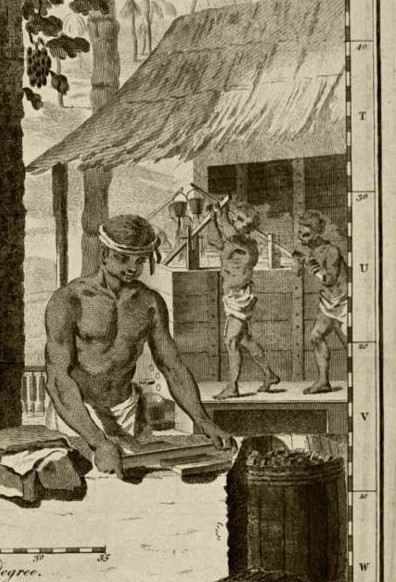
Early 1800s – The Sea Island Cotton Plantation Era
(swipe left or right to discover more)
Early 1800s – The Sea Island Cotton Plantation Era
(click dates and arrows on timeline to discover more)
-
1800
Large scale indigo production in Georgia and on Ossabaw Island ended. The silky and highly-prized Sea Island Cotton became the primary crop on Ossabaw Island. Skilled enslaved people picked and processed this delicate long-fiber cotton.
1802
John Morel, Jr. dies. His third of Ossabaw Island (South End Plantation) is divided into two properties: South End and Buckhead.
South End changes ownership several times, and is purchased by George Jones Kollock in 1847.
Buckhead is inherited by Morel Jr.’s daughter Mary Ann Morel, then passed to her daughter Mary Rutherford Skrine Simmons and then later to Simmons’ grandson Charles S. Cory. Cory sells the plantation in 1916 to Henry Davis Weed.
-
1813
Bryan Morel dies. North End passes to his son, Bryan McQueen Morel.
-
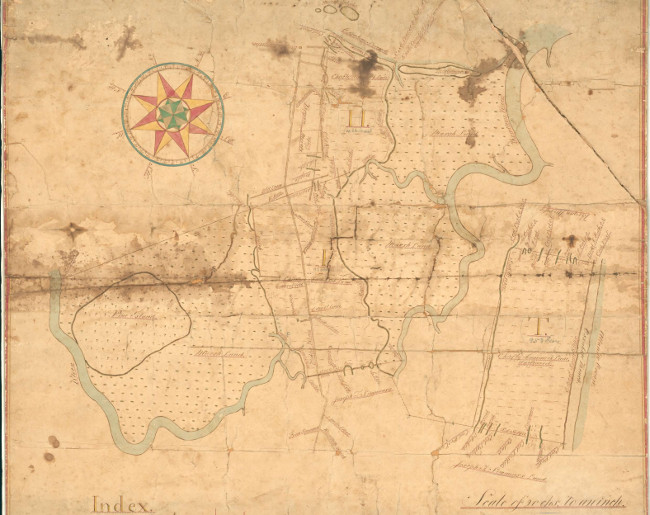
1843
Patrick Houston dies. His daughter and her husband, Georgia Ann Moodie Houston and Alexander McDonald, inherit Middle Place. After their deaths, their daughter Georgia McDonald inherits Middle Place.
-
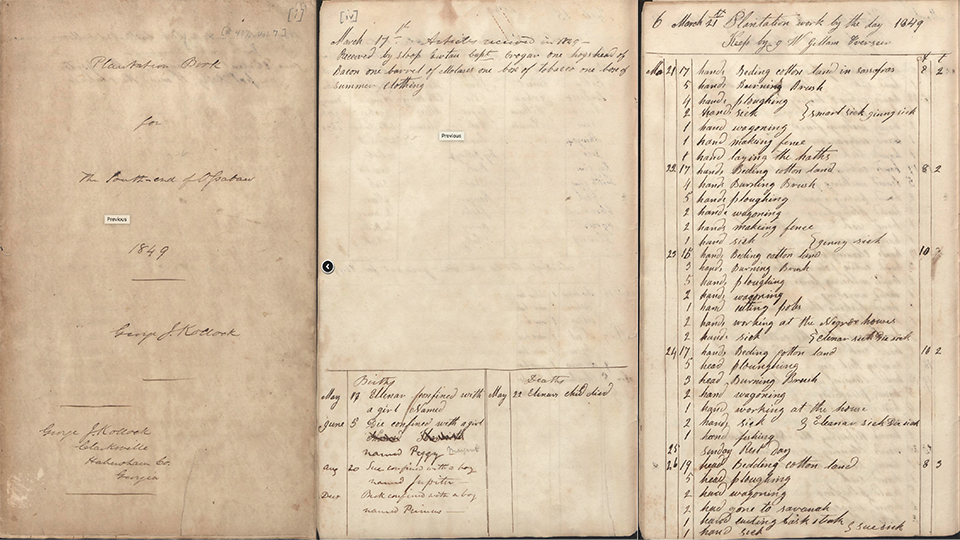
1847 – 1861
South End owned by Kollock. His detailed plantation records reveal information on enslaved African Americans working the plantation. Kollock and other Ossabaw Island owners, enslaved between 68-70 people on each plantation.
1866 – 1878 – The Freedmen Era
On January 16, 1865, Union General William T. Sherman issued his Special Field Order No. 15, which confiscated as Union property a strip of coastline stretching from Charleston, South Carolina, to the St. John’s River in Florida, including Georgia’s Sea Islands and the mainland thirty miles in from the coast. The order redistributed the roughly 400,000 acres of land to newly freed black families in no more than forty-acre segments.
The United States Bureau of Refugees, Freedmen, and Abandoned Lands, commonly known as the Freedmen’s Bureau, was created by Congress in 1865 to assist in the political and social reconstruction of post-war Southern states and to help formerly enslaved people make the transition from slavery to freedom and citizenship. The Freedmen’s Bureau was authorized to give freedmen legal title for forty-acre plots of land.
1863
Fort Seymour on Bradley Point, the northeastern tip of the island, was established by the U.S. Army. The Fort was occupied only from March to July of that year.
1865
Following the end of the Civil War, Ossabaw Island came under the control of the U.S. Government’s Bureau of Refugees, Freedmen, and Abandoned Lands. A few formerly enslaved people of Ossabaw applied and were awarded land ranging from 10 to 20 acres. Mustafa Shaw, originally from McIntosh County, a discharged member of the 33rd Infantry of the United States Colored Troops, was also awarded land on Ossabaw Island.
1866
The majority of the newly freedmen and women continued to work for Fly, Middleton, and Magill (agricultural firm) as tenant farmers under the sharecropping system on the same plantations they were born and enslaved. Special Field Order No. 15 was a short-lived promise for blacks. U.S. President Andrew Johnson overturned Sherman’s directive in the fall of 1865, after the Civil War had ended, and returned most of the land along the South Carolina, Georgia, and Florida coasts to the planters who had originally owned it. By May 1866, the lands on Ossabaw Island had been restored to the Confederate owners.
1867
The freedmen who were not orignially from Ossabaw and who received promissory title under Field Order 15 vacated the island. The Whites, the Moses’s, the Steward’s and the Shaw’s all left the island. The Stewart’s and the George’s, the Woodruff’s resettle in nearby Whitebluff according to the Freedman Bureau records.
1870
Habersham family purchases South End Plantation from the Kollocks.
1878
Ossabaw’s African American community established Hinder Me Not Baptist Church on Ossabaw Island with 68 members, most likely at Middle Place. The first known minister was Reverend B.O. Butler. From 1883 to 1885, Reverend Thomas Bonds served as minister. When the church’s congregants and minister immigrated to the Pin Point community on the mainland, the congregation split into First Beulah Baptist Church of Montgomery and Sweet Field of Eden.
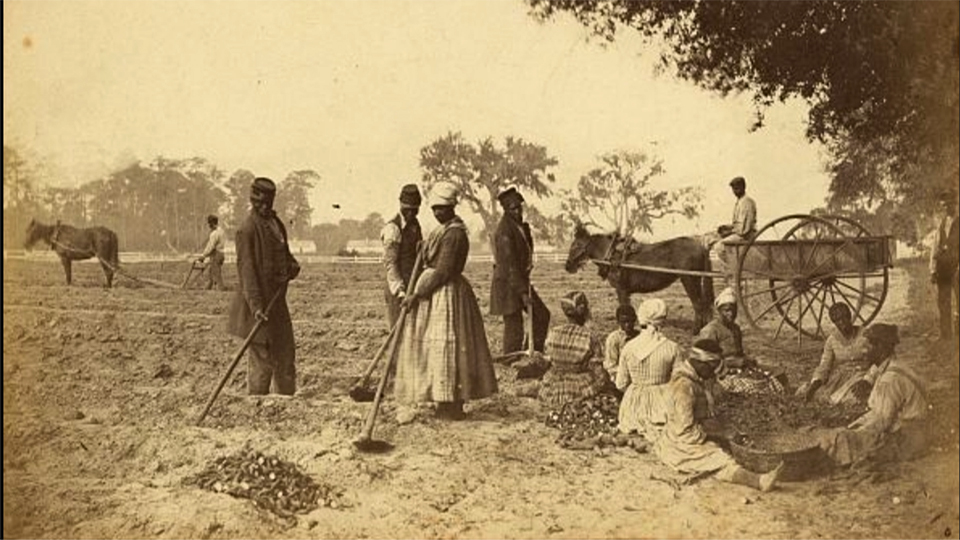
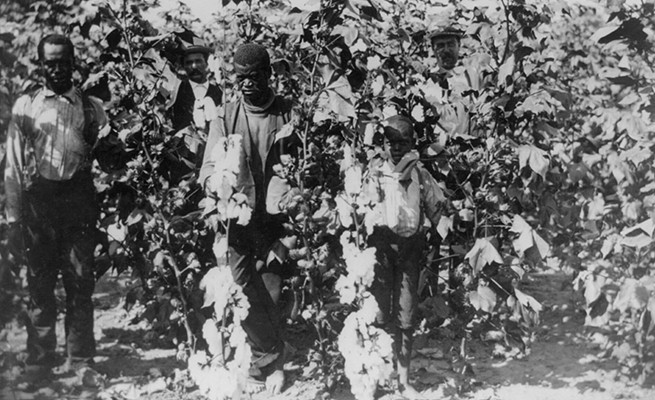
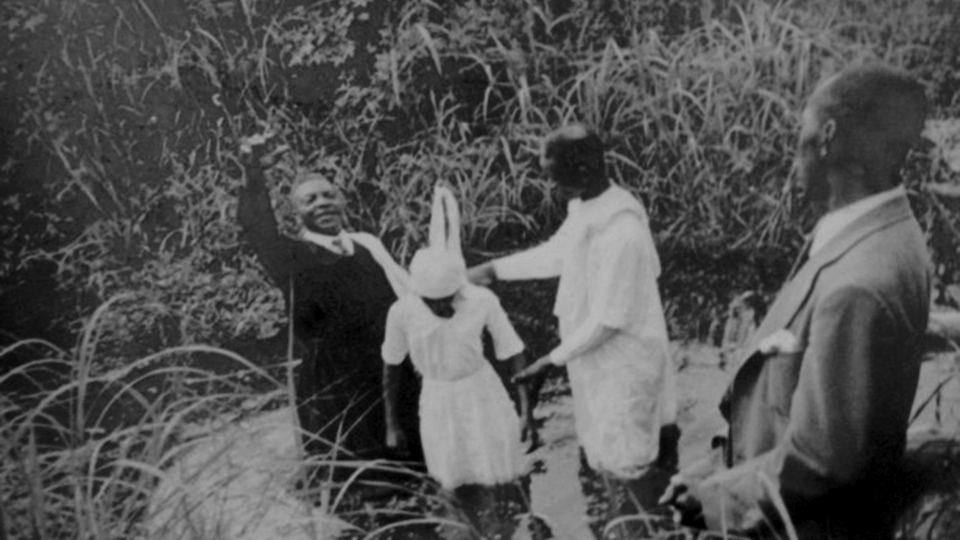
Late 1800s – Hurricanes, Hunters and Migration to Mainland
(swipe left or right to discover more)
Late 1800s – Hurricanes, Hunters and Migration to Mainland
(click dates and arrows on timeline to discover more)
-
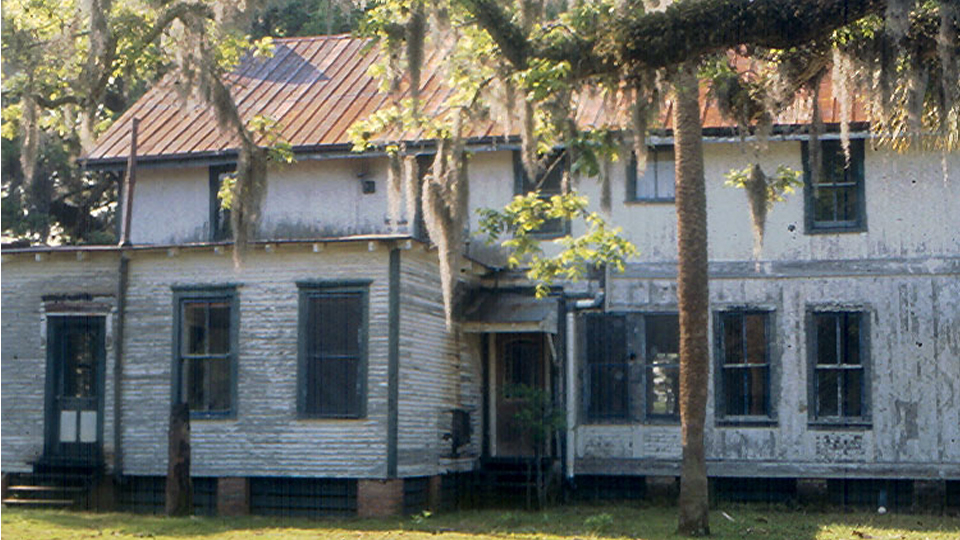
1881
Major hurricane hits Ossabaw Island, perhaps destroying the Morel House at the North End.
1883
Archibald Rogers purchases South End Plantation.
1886
North End sold to James Waterbury of New York, who constructs a hunting lodge (now called Clubhouse) during his ownership.
-
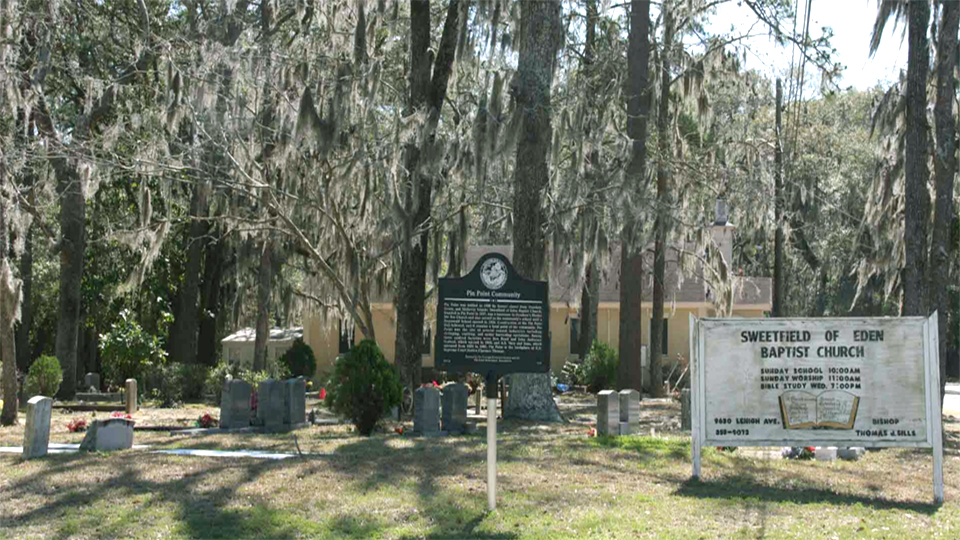
1895
Representatives of John Wanamaker purchased North End from Waterbury and South End from the Roberts family for Thomas Wanamaker, John’s son. Wanamaker was the owner of Wanamaker Department Store in Philadelphia, PA.
1896
C.B. Moore of Philadelphia excavated nine prehistoric mounds on Ossabaw Island. To read more about his discoveries, click here
Ossabaw Island Foundation Oracle article: Clarence Bloomfield Moore’s Archaeological Expedition to Ossabaw Island, 1896 – 1897
1897
The Sweet Fields of Eden Baptist Church is established in Pin Point, a new congregation comprised of members of the disbanded Hinder Me Not Baptist Church on Ossabaw Island.
Mid-1890s
The African American inhabitants of Ossabaw Island relocate their community to the mainland, establishing Pin Point and Montgomery communities, Chatham County after a series of deadly and destructive hurricanes hit the Georgia coast. These Sea Island Hurricanes took place in August and October 1893 and August and October 1898. Thousands of people living on the Sea Islands in Georgia and South Carolina lost their lives.
Early 1900s – Consolidation
1903
Georgia McDonald and her husband Charles Harper sell Middle Place to James M. Furber, an intermediary acting on behalf of John Wanamaker’s son. Thomas Wanamaker owns all of Ossabaw Island except Buckhead.
1907
Henry David Weed of Savannah purchases North End, Middle Place and South End properties from Wanamaker.
1916
Henry David Weed of Savannah purchases Buckhead from the Morel family, ending 153 years of Morel ownership of some portion of Ossabaw Island. Weed becomes the first sole owner of all of Ossabaw Island since 1777.
Weed sells all of Ossabaw Island to several Savannah-based partners of Strachan Shipping Company, who use the island as a hunting and outdoor recreation area.
1916 – 1950s
Despite having moved their community off the island in the 1890s, many African American workers and their families spend extended periods living on the island and working for the various owners.
1970s
The last known African American families to live on Ossabaw Island move off the island once more, many rejoining their relatives in Pinpoint, Sandfly and Montgomery. Families include Bowens, the Emmanuel “Manny” Williams, the Julius “Joe” Williams, and the Cyrus “Jimbo” Martin families. Several individuals continue to live and work on Ossabaw for the Torrey family.
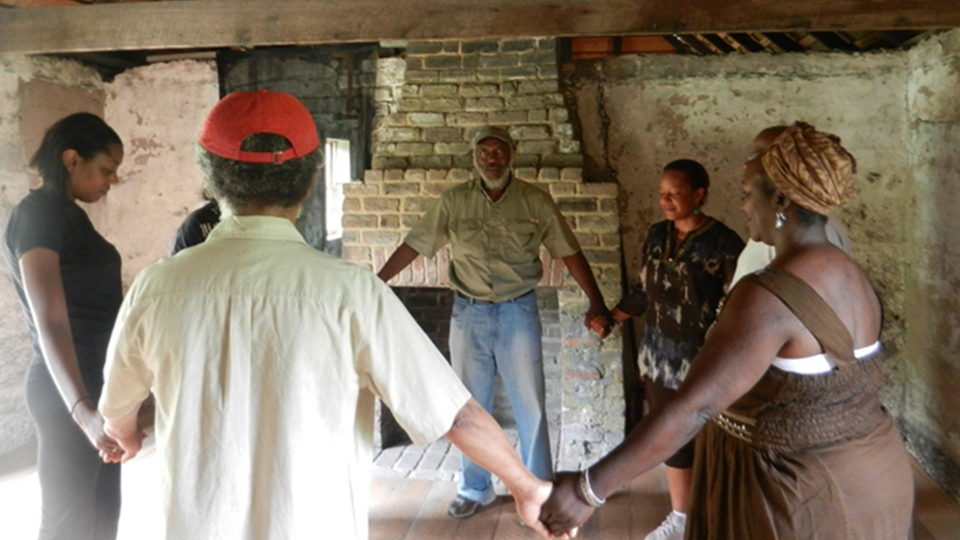
1924-1959 – Henry Norton Torrey and Nell Ford Torrey
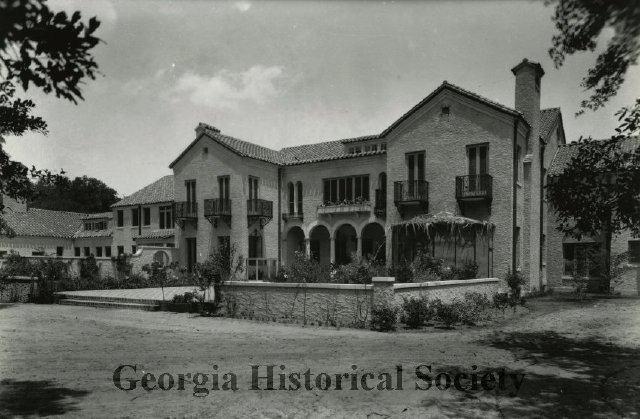
1924
Harry Norton Torrey and Nell Ford Torrey purchase Ossabaw Island from the Strachan Shipping Company partners that own the island. The Torreys use the island seasonally from January to April to escape the Michigan winters.
1926
The Torreys construct a 20,000 square foot Spanish Colonial-style winter residence overlooking Ossabaw Sound.
1945
Harry Norton Torrey dies.
1959
Nell Ford Torrey dies. The island is passed to Henry and Nell Torrey’s daughter, Eleanor “Sandy” Torrey West, and the four children of their late son, William.
1961 – 2000: Eleanor “Sandy” West and The Ossabaw Island Foundation
(swipe left or right to discover more)
1961 – 2000: Eleanor “Sandy” West and The Ossabaw Island Foundation
(click dates and arrows on timeline to discover more)
-
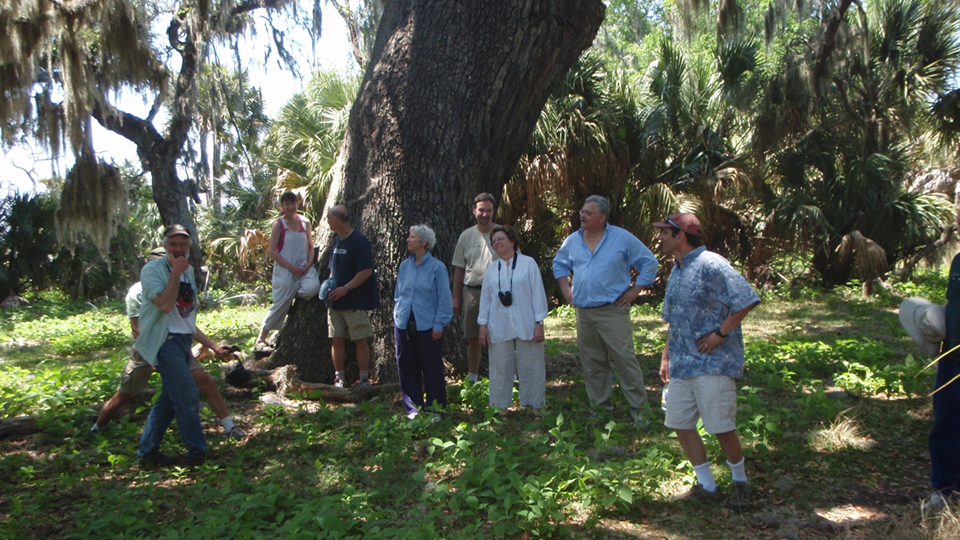
1961
Eleanor “Sandy” West begins the Ossabaw Foundation and the Ossabaw Island Project (1961 – 1980).
-
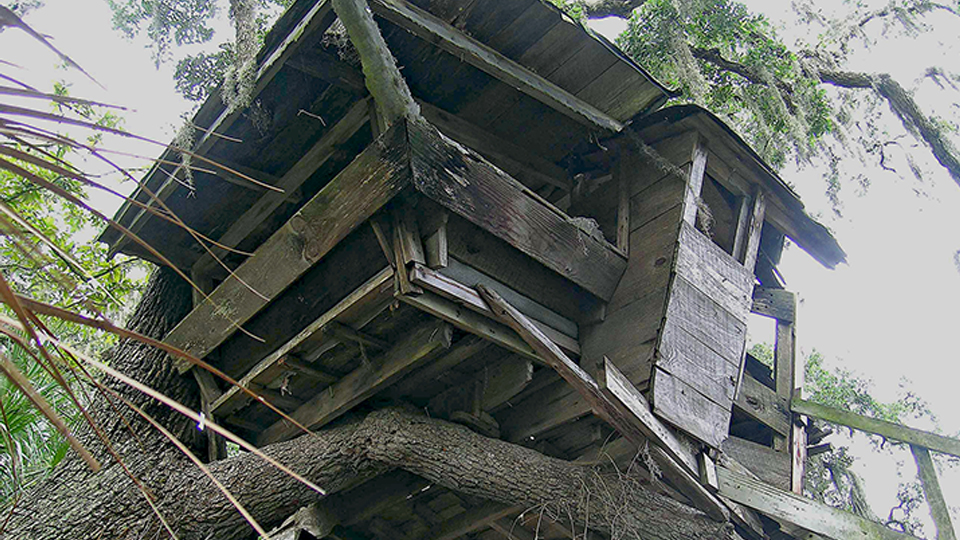
1970
Eleanor “Sandy” West begins the Genesis Project (1970 – 1982).
-
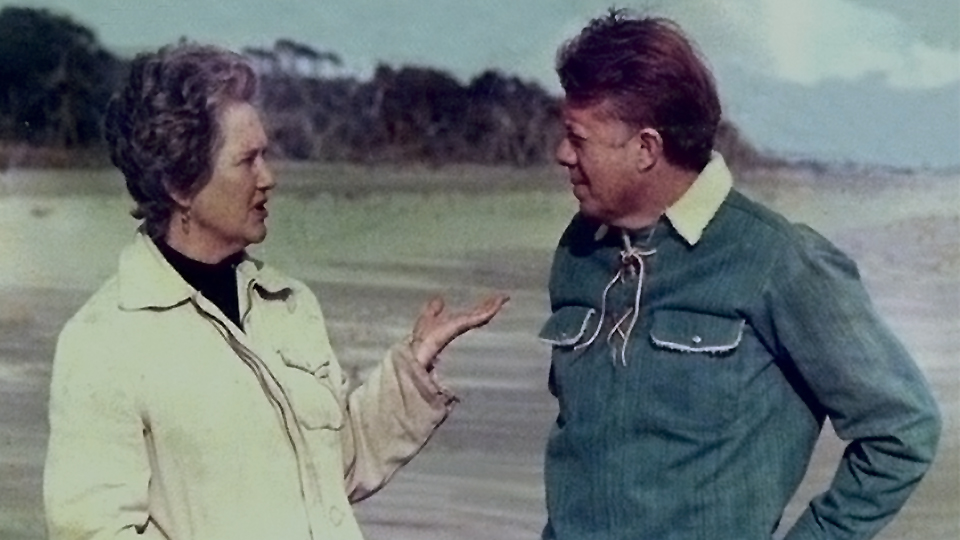
1978
The State of Georgia purchases Ossabaw Island from the William Torrey children and Eleanor West at 50% of its appraised value. Ossabaw Island is established as Georgia’s first Heritage Preserve, set aside for natural, scientific, and cultural research and education. Eleanor West receives a life estate of the family home and immediately surrounding grounds and outbuildings. Management of Ossabaw Island is established under the Georgia Department of Natural Resources.
-
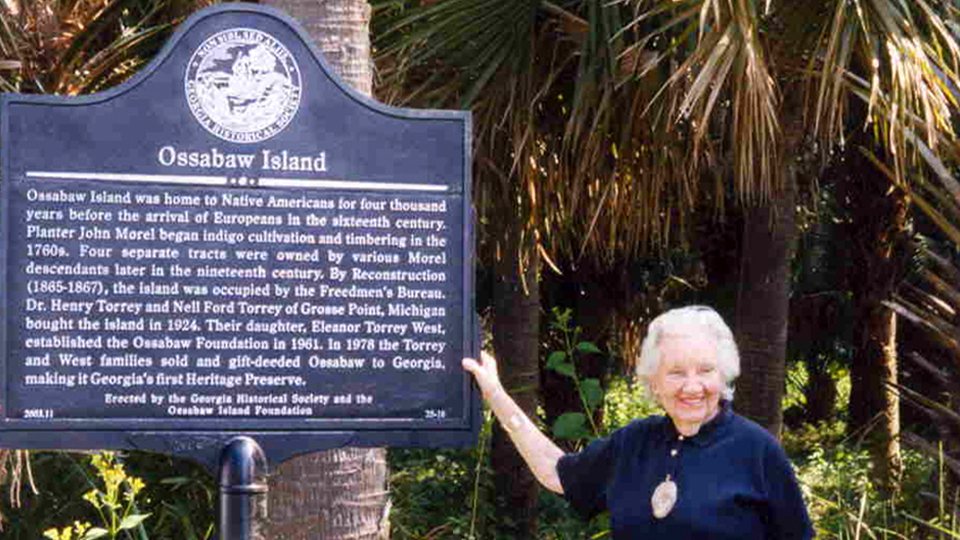
1986
Eleanor “Sandy” West establishes full-time residency on Ossabaw Island.
-
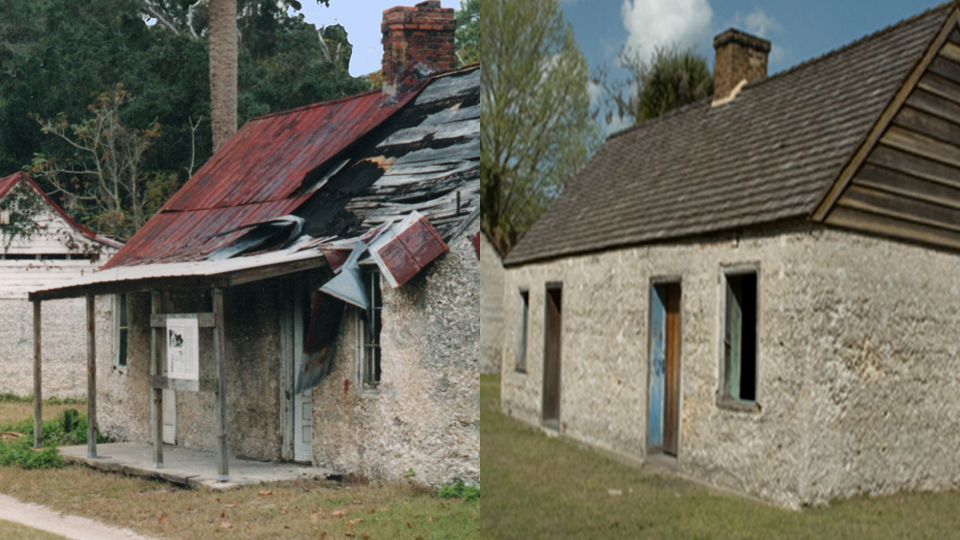
1994
The Ossabaw Island Foundation (TOIF) is established in order to facilitate programming and preserve the architectural and historical resources on Ossabaw Island.
2000 Onward
The Ossabaw Island Foundation and the Georgia Department of Natural Resources work collaboratively to manage the island and fulfill the mission of the Heritage Preserve.
Eleanor West lived full-time in the family home on Ossabaw Island until May of 2016. She died on her 108 birthday, January 17, 2021.
